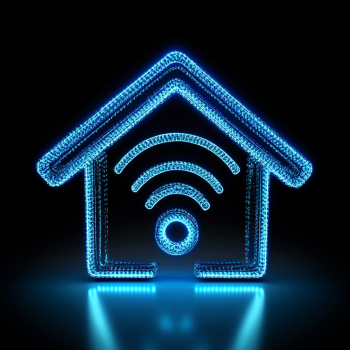Why is it important to protect your home Wi-Fi?
Home Wi-Fi is a convenient way to connect to the Internet for all your devices. However, an unsecured network can become easy prey for intruders or neighbors who want to “connect” to your Internet. This not only reduces the connection speed, but also creates risks for the security of your data. On the Winsool.com website, we will tell you how to protect your network and avoid unwanted guests.
1. Start with basic security: setting up a password
1.1. Use a complex password
The first step to protecting your Wi-Fi is to create a strong password. Avoid simple combinations such as “123456” or “password”. An ideal password should include:
- Upper and lower case letters.
- Numbers.
- Special characters (e.g. !, @, #).
An example of a strong password: Wi-FiSecure2023!.
1.2. Don’t use personal information
Never use easily accessible information (name, date of birth, address) in your password. Attackers can use this information to hack your account.
2. Choose the right encryption type
2.1. Ditch outdated standards
Make sure your router uses the modern WPA3 encryption protocol. If your equipment does not support it, select WPA2. Outdated protocols such as WEP are extremely insecure and easy to crack.
2.2. How to check the settings?
- Log in to the router control panel via a browser (usually the address is 192.168.0.1 or 192.168.1.1).
- Find the “Security” or “Wi-Fi Settings” section.
- Make sure that the WPA2 or WPA3 protocol is selected.
3. Hide the network name (SSID)
3.1. What is an SSID?
The SSID is the name of your Wi-Fi network, visible to all devices in the coverage area. By default, the router broadcasts this name, making the network searchable.
3.2. How to hide a network?
- In the router control panel, find the “SSID Broadcast” setting. Disable this function.
- Now you will need to manually enter the network name to connect to it.
This is not absolute protection, but it makes it difficult for random users to find your network.
4. Limit the number of connected devices
4.1. How to do it?
You can specify the maximum number of devices that can connect to the network simultaneously in your router settings. This will prevent channel overload.
4.2. Blocking MAC addresses
Each device has a unique MAC address. You can configure your router to allow only devices with trusted MAC addresses to connect:
- Find the “MAC filter” section in the settings.
- Add the MAC addresses of your devices to the white list.
5. Update your router firmware
5.1. Why do I need this?
Manufacturers regularly release updates to fix vulnerabilities and improve security. Outdated firmware can become a loophole for attackers.
5.2. How to update?
- Check for updates in the router control panel.
- If automatic updates are not available, download a new firmware version from the manufacturer’s official website.
6. Disable remote access to the router
6.1. What is remote access?
This feature allows you to manage the router settings via the Internet. However, it can also be used by attackers to hack.
6.2. How to disable?
- In the control panel, find the “Remote access” or “Remote management” section.
- Disable this option.
7. Use a Guest Network
7.1. Why do you need a guest network?
If you want to provide Internet access to friends or relatives, but do not want to share the main password, set up a guest network. It is isolated from your main network and does not provide access to local devices.
7.2. How to set it up?
- In the router control panel, find the “Guest Network” section.
- Enable the function and set a separate password.
8. Protect your router physically
8.1. Place your router in a safe place
Make sure your router is in a hard-to-reach place, especially if you have children or guests. This will prevent accidental or intentional changes to the settings.
8.2. Change the admin password
By default, many routers use standard logins and passwords (e.g. admin/admin). Change them to more complex combinations.
9. Monitoring connected devices
9.1. How to check?
The router control panel usually has a “Connected devices” section where you can see a list of all active connections. If you notice an unknown device, block it immediately.
9.2. Use applications
Some manufacturers offer mobile applications for network monitoring. For example, TP-Link Tether or Mi Wi-Fi.
Helpful tips from Winsool.com
- Change your password regularly: Even if you are confident in the security of your network, changing your password periodically is a good practice.
- Turn off Wi-Fi at night: If you do not use the Internet at night, turn off your router.
- Use surge protectors: They protect devices from power surges and extend the life of your equipment.
Protecting your home Wi-Fi network is a simple process that requires attention to detail. By following our recommendations, you can prevent unauthorized access and maintain stable Internet speed. If you have any questions or want to learn more about setting up a network, contact us at Winsool.com – we are always ready to help!









Leave a Reply